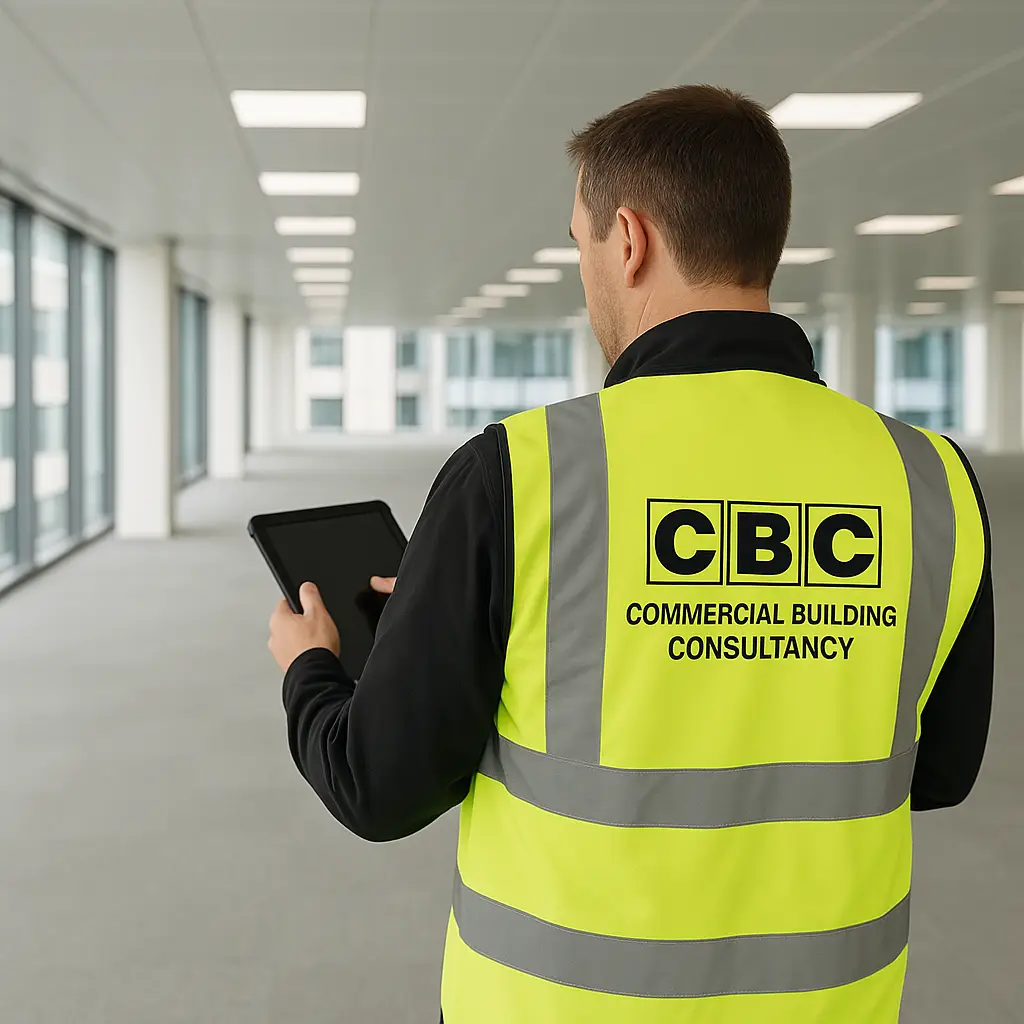For commercial tenants, entering into a new lease agreement can be a significant step, filled with excitement and opportunity. However, amidst the planning and anticipation, it’s crucial to ensure that the terms of the lease are fair and that you are protected from any unforeseen liabilities. One essential tool in achieving this is the Schedule of Condition (SoC) survey. This guide explores the importance of SoC surveys for commercial tenants, outlining their benefits and how they can safeguard your interests.
What is a Schedule of Condition Survey?
A Schedule of Condition survey is a detailed inspection and documentation of a property’s condition at a specific point in time, typically before the commencement of a lease. The survey includes a thorough examination of the building’s structural elements, finishes, fixtures, and fittings. The findings are presented in a detailed report, often accompanied by photographs and sometimes videos, providing a comprehensive record of the property’s state.
Why Conduct a Schedule of Condition Survey?
Conducting an SoC survey offers numerous benefits for commercial tenants:
- Establishing Baseline Condition: The survey provides an accurate record of the property’s condition at the lease’s start. This baseline is crucial for distinguishing between pre-existing issues and any damages that occur during your tenancy.
- Avoiding Unfair Repair Costs: Without an SoC survey, tenants might be held responsible for repairing damages that were already present before they moved in. The survey ensures that you are only liable for damages that occur during your lease term.
- Facilitating Fair Lease Agreements: An SoC survey helps in negotiating fair lease terms. It provides a clear picture of the property’s condition, allowing for informed discussions about repair and maintenance responsibilities.
- Dispute Resolution: Should any disputes arise regarding the property’s condition at the end of the lease, the SoC survey serves as an objective reference point. This can be invaluable in resolving disagreements amicably and fairly.
- Planning Maintenance and Repairs: Understanding the property’s current condition helps tenants plan for any necessary maintenance and repairs. This proactive approach can prevent minor issues from becoming major problems, ensuring a smooth and uninterrupted business operation.
When Should a Schedule of Condition Survey Be Conducted?
The optimal times for conducting an SoC survey include:
- Before Lease Commencement: The most critical time to conduct an SoC survey is before signing the lease. This ensures that the initial condition is well-documented and agreed upon by both parties.
- Before Renovations or Alterations: If you plan to make significant changes to the property, an SoC survey can document the pre-renovation condition, ensuring any subsequent issues can be clearly attributed.
- Lease Renewal or Extension: When renewing or extending a lease, updating the SoC survey can document any changes in the property’s condition, ensuring fair handling of repair obligations.
How is a Schedule of Condition Survey Conducted?
An SoC survey typically involves the following steps:
- Property Inspection: A qualified surveyor conducts a detailed inspection of the property, covering both interior and exterior aspects. Key structural elements, finishes, fixtures, and fittings are examined.
- Documentation: The surveyor records the findings meticulously, using photographs and sometimes videos to provide visual evidence. Each element’s condition is described, noting any existing damage or wear.
- Report Compilation: The surveyor compiles the findings into a comprehensive report. This report includes detailed descriptions of the property’s condition, supported by visual evidence.
- Review and Agreement: The report is reviewed by both the tenant and landlord. Any discrepancies or concerns are discussed and resolved. Once agreed upon, the report serves as an official record of the property’s condition.
Key Elements of a Schedule of Condition Survey
A thorough SoC survey should cover:
- Structural Elements: Walls, floors, ceilings, roofs, and foundations should be inspected for any signs of damage, cracks, or dampness.
- Exterior Features: The condition of external walls, roofing, windows, doors, and any external fixtures like gutters and downspouts should be assessed.
- Interior Finishes: The state of internal walls, flooring, ceilings, and any built-in fittings should be documented.
- Services and Installations: The condition of plumbing, electrical systems, heating, and cooling installations should be noted.
- Fixtures and Fittings: Any permanent fixtures and fittings, such as kitchen units or bathroom fittings, should be inspected.
Choosing a Qualified Surveyor
Selecting a qualified and experienced surveyor is crucial for an accurate and reliable SoC survey. Look for surveyors who are members of recognised professional bodies, such as the Royal Institution of Chartered Surveyors (RICS). A qualified surveyor ensures that the survey is conducted methodically and the report is detailed and unbiased.
Legal Implications of Schedule of Condition Surveys
An SoC survey can have significant legal implications:
- Lease Agreements: The survey can be attached to the lease agreement, clearly defining the tenant’s responsibilities. It helps delineate what constitutes tenant damage versus fair wear and tear.
- End-of-Lease Negotiations: At the lease’s end, the SoC survey can be used to assess any dilapidations claims. It provides a clear record of the property’s condition at the lease’s start, which can be compared to its end condition.
Best Practices for Tenants
To maximise the benefits of an SoC survey, tenants should:
- Incorporate the SoC Survey into the Lease Agreement: Ensure the SoC survey is formally referenced in the lease agreement, ensuring both parties acknowledge its findings.
- Regularly Update the SoC Survey: If significant changes occur during the lease term, such as after major repairs or upgrades, consider updating the SoC survey to reflect these changes.
- Communicate Clearly with Landlords: Ensure landlords understand the purpose and findings of the SoC survey. Clear communication helps prevent misunderstandings and fosters a cooperative landlord-tenant relationship.
Conclusion
For commercial tenants, a Schedule of Condition survey is an invaluable tool. It provides a clear record of the property’s condition, protects against unfair repair costs, and facilitates fair lease agreements. By understanding the purpose, process, and benefits of SoC surveys, tenants can better manage their tenancy and maintain positive relationships with landlords.
Incorporating SoC surveys into your lease agreements ensures that you are well-prepared to handle any issues that arise, safeguarding your business operations for the long term. If you have yet to utilise SoC surveys in your tenancy arrangements, now is the time to start. Contact a qualified surveyor today and take the first step towards more secure and transparent property management.


